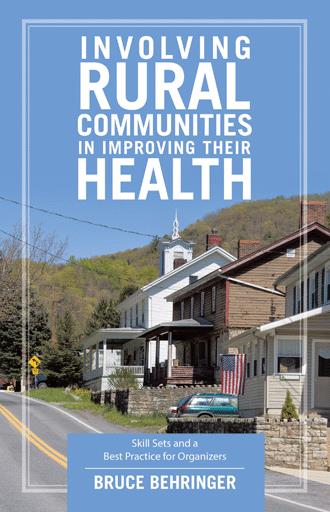Assisting groups in communities and organizations has a cyclical nature. Several of the models and tools presented in this book illustrate this thinking. Each organizing experience should end in the same fashion through reflecting on outcomes and integrating lessons learned into a professional resume and organizer’s philosophy. Below is a list of simple but hard-earned conclusions drawn from my own career of organizing experiences.
1. The starting point is to understand the group(s) involved and the role of the organizer. There are four typical configurations to consider.
a. Organize within a single group. This may encompass helping a group to define itself, its agenda, or how its parts can work together toward a goal. Case 1 with the Aurora Cardiovascular Program and Case 12 about the safety net clinics association are examples.
b. Help a single group to interact with other sometimes larger groups. This requires finding common purpose, creating avenues to facilitate communication, and promoting cooperative action. Case 3 with the Joint Task Force, Case 4 with the Hispanic coalition in Tennessee, and Case 15 with the new regional Southwest Virginia foundation provide examples.
c. Help two or more equal groups to work together. Here an organizer may be charged with a broad range of goals. Examples are found in Case 2, combining community health centers and local health departments to develop small grants, and the Case 11 regional neonatal abstinence syndrome conference with researchers, clinicians and impacted communities.
d. Simultaneously helping multiple groups with different interests. The challenges are multiplied by the number of groups, and their differences in diversity, interests, and intentions. The Case 5 Data Blitz exemplifies this complex challenge set among varied community organizations and academic interests. Case 6 represents an example in which the perspectives of six stakeholder groups from five states had to be considered to redefine Appalachian substance use.
2. Prepare, prepare, prepare … but be willing to change and creatively adapt. Many types and styles of preparation are suggested. I have adopted a simple mantra I repeat before taking on an organizing task:
a. To know a person or group or organization or a community, one must explore its history.
b. To clarify the history, one must learn about the place and its context.
c. To understand the context, one must appreciate the culture.
3. If not already pre-established, the organizer must identify the preexisting ideas for change that are voiced or silent within the group. This is done through cooperatively developing written problem statements, goals, and preferred strategies for change. Keep trying to find the real problem or opportunity (asking the “why” question) that brings the group together, or, alternatively, could force it apart. If change is not the purpose of a group, then an organizer may not be needed.
4. There are many moving parts and uncontrolled variables in organizing opportunities. Using systems terminology, organizers rarely control the inputs including the sponsor’s purpose, the group membership, and the timeline. Organizers must do their best to manage throughputs with meeting design, group process planning, and facilitation skills. Organizers may influence but not control outputs such as group agreements, conclusions for final reports and group products. Realizing this lack of control can reduce an enormous sense of angst.
5. Negotiate a process that is seen as fair and leads through a productive path to achieve the group goal. Remember the important role of framing questions to help groups explore possibilities, promote commitment, and achieve greater group cohesion. Being a good listener, showing fairness, drawing upon a breadth of experience, and being creative should be characteristics that organizers appreciate hearing when a sponsors and groups describe their work.
6. With groups, success often breeds greater success. Maintain a continuous sense of progress and accountability for results as measured against meeting objectives and group goals. Engaging the group in formative evaluation is important. This means creating interim reports and accountability checklists that document tasks as they are completed. This promotes an important sense of continuity. The more a group is involved in defining tasks and determining measures for accountability, the greater will be the group’s long-term ability to sustain cohesion and sense of identity.
7. Use an assortment of tools to maintain a longitudinal focus. The Five Step Program Development Process tool is an example. Another is a program Context File. It contains lists and notes of dates, important people, events, and internal and external influences that identify promoting and resisting forces that have been encountered. This approach is a practical application of Lewin’s Force Field Analysis (Lewin, 1948). By updating the forces, or reassessing their strength over time, the organizer can recall sentinel events and reflect on things that may have appeared not significant at one point only to emerge later as critical factors.
8. Express appreciation to the sponsor and thank group members before you begin, repeatedly during the process, and upon completion of the task. Always be verbally appreciative that participants are willing to contribute. When all the memories of the meeting are gone, what’s left is the written report or group product. Take time for the follow-through to make the report reflect the group’s work.
This book really tells one story spread across fifty years. It demonstrates the diversity of organizing opportunities offered to me through a wide variety of issues. The cases underscore the importance of a flexibility necessary to respond to offers to assist groups in organizations and communities. The organizing strategies and group process methods have been drawn from many disciplines. Taken as a whole, this book portrays an organizer as a generalist with multiple broad-based skills sets that enable her or him to be helpful in various practice situations, content areas, and programs (Murty, 2014). My time-tested approach is to listen to the group, offer my expertise, encourage them to come to their own conclusions, and make their own decisions about actions for improvement.


